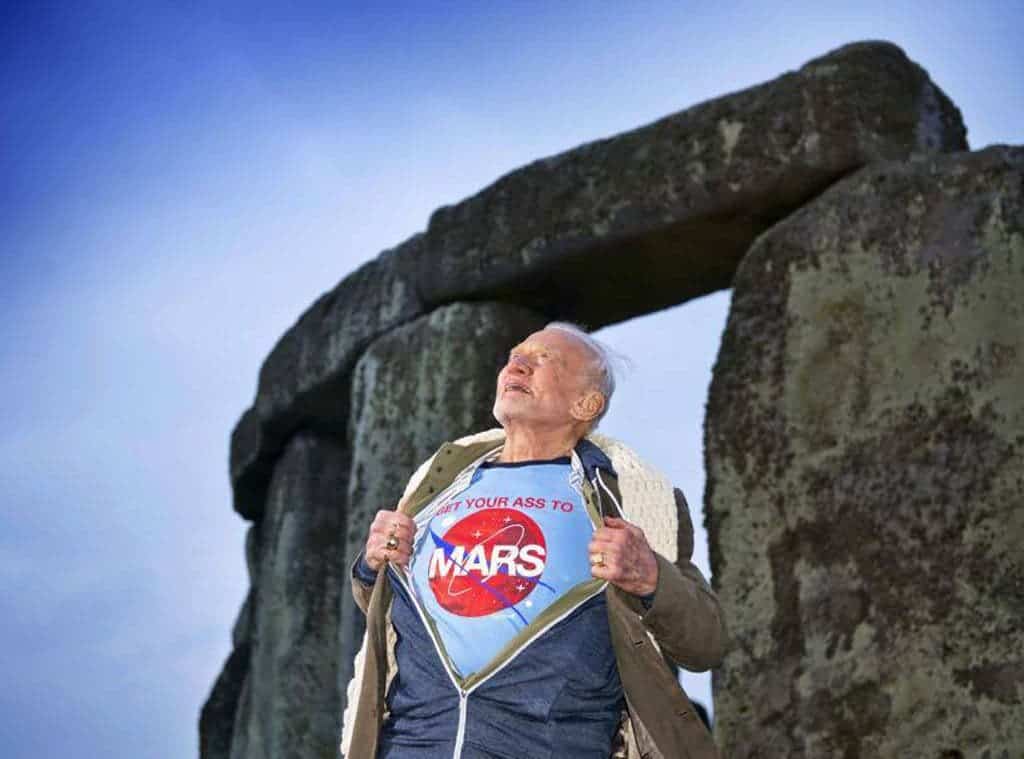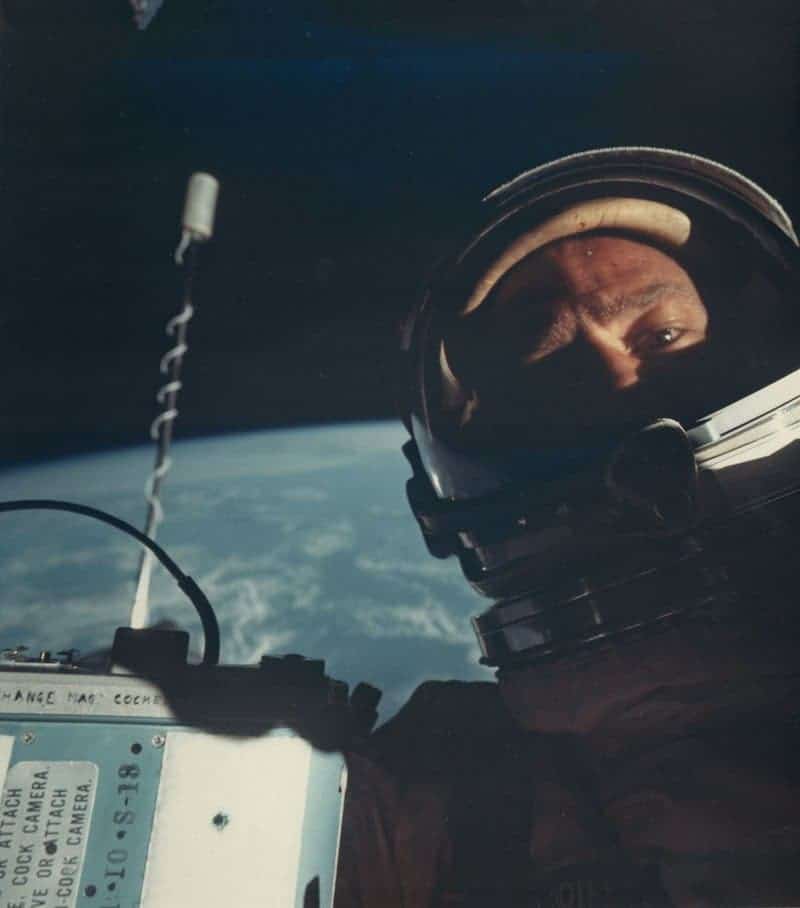
Buzz Aldrin, the second man on the moon, is no stranger to staggering photos. His most famous shot includes the first ever selfie in space. Now, while visiting Stonehenge, Aldrin posted on Twitter a photo of him sporting a t-shirt with a stylized Mars logo a la NASA, which read “Get your ass to Mars”. A long time supporter of inter-planetary exploration, both publicly during his numerous TV appearances or press editorials and institutionally during his stints in front of Congress, this latest publicity shot aims to inspire the public and garner support for a manned mission to Mars.
While at @EH_Stonehenge yesterday I decided to send a message to the cosmos. #GYATM (Photo by James O.Davies) pic.twitter.com/ra5Y2OsSPB
— Buzz Aldrin (@TheRealBuzz) March 16, 2015
[ALSO SEE] The first man to pee on the moon, Buzz Aldrin
Aldrin, now 85, took the photo white hair billowing in the wind right in front of the Stonehenge circle. It’s one of the most famous prehistoric sites in the world, inciting our imagination for generations. It’s no wonder that the former astronaut chose it to make his statement. Setting foot on Mars, similarly to how he walked on the moon almost 50 years ago, requires not only great determination, but vision and courage. Last year, in November, Aldrin wrote an op-ed for Time in which he stressed the importance of a Mars mission.
I firmly believe we will establish permanence on that planet. And in reaching for that goal, we can cultivate commercial development of the moon, the asteroid belt, the Red Planet itself and beyond. …
We need to look forward to countries around the globe following our lead and establishing a rotating permanence on Mars for science and commercial resources.
Some 45 years ago, when Neil Armstrong and I stepped upon the surface of the moon at Tranquility Base, we fulfilled a dream held by humankind for centuries. Yes, it was one small step. Today, more steps are needed.

Right now, the most exciting prospect for a man on the Moon comes from the Dutch non-profit organization, Mars One. The organization wants to send humans on a one-wide ride to Mars to colonize the planet by 2025. Many leading voices in the space industry and science have widely criticized the idea, calling it either a sham or a disaster waiting to happen. NASA on the other hand is dead serious on going to Mars, and it’s proven track record means they actually stand a chance 2030 onward.






